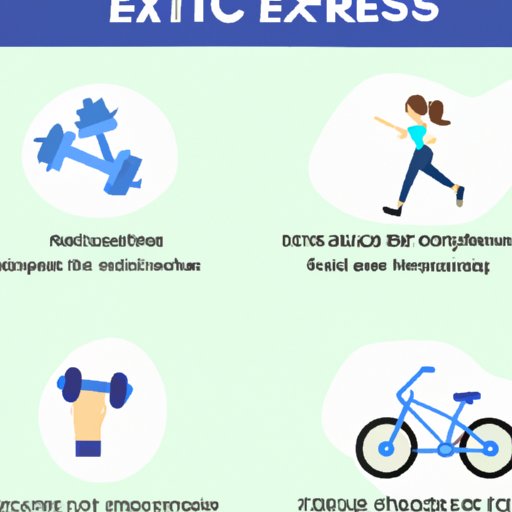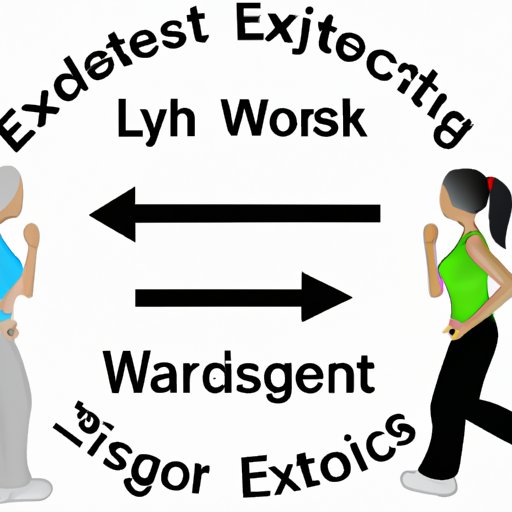Introduction
Exercise is any physical activity that gets your heart rate up and increases circulation throughout the body. Exercise has been proven to have numerous health benefits, such as improved cardiovascular health, strengthened muscles and bones, reduced stress levels, and improved mental health. While there are many different types of exercise, it is important to understand the recommended guidelines for physical activity and how to make time for exercise in a busy schedule.

Benefits of Exercising at Least 30 Minutes Per Day
The American Heart Association recommends that adults get at least 150 minutes of moderate-intensity aerobic exercise each week, which equates to about 30 minutes per day. This type of exercise includes activities like walking, jogging, swimming, or dancing. Regular aerobic exercise can help improve cardiovascular health by strengthening the heart and lungs, increasing endurance, and reducing blood pressure. Additionally, regular exercise can strengthen muscles and bones and reduce the risk of injury or illness.
Regular exercise has also been linked to a number of mental health benefits, including improved mood, increased self-esteem, and reduced stress and anxiety. According to a study published in the journal Psychology of Sport and Exercise, “Exercise can be used as an effective strategy to reduce stress and improve mental health.”
The Health Risks of Not Exercising Enough
It is important to note that not exercising enough can have serious health consequences. According to the World Health Organization, physical inactivity is the fourth leading risk factor for global mortality, accounting for 6% of deaths worldwide. People who do not exercise regularly are at an increased risk of chronic diseases, such as heart disease, stroke, and diabetes. They are also more likely to suffer from weakened immune systems and depression.
How to Make Time for Exercise in a Busy Schedule
With work, school, family, and other commitments, it can be difficult to find time for regular exercise. However, it is important to prioritize exercise, set realistic goals, and break exercise into smaller sessions if necessary. For example, instead of trying to fit in one hour of exercise every day, break it up into two 30-minute sessions or three 20-minute sessions. It is also helpful to plan ahead and schedule exercise sessions into your weekly routine.

Different Types of Exercise and Their Benefits
There are many different types of exercise that can provide health benefits. Aerobic exercise, such as running, swimming, or cycling, can help improve cardiovascular health and increase endurance. Strength training, including weightlifting or bodyweight exercises, can help build muscle and improve bone density. Stretching, such as yoga or Pilates, can help improve flexibility and reduce the risk of injury.

Understanding the Relationship Between Exercise and Weight Loss
It is important to understand the relationship between exercise and weight loss. Exercise alone is not enough to lose weight; nutrition is just as important. Calories are the energy we get from food, and we need to burn more calories than we consume in order to lose weight. Genetics also play a role in weight loss, as some people may be predisposed to gaining or losing weight more easily than others.
Conclusion
Exercising regularly can have numerous health benefits, from improved cardiovascular health to better mental health. The American Heart Association recommends that adults get at least 150 minutes of moderate-intensity aerobic exercise each week, which equates to about 30 minutes per day. Not exercising enough can have serious health consequences, including an increased risk of chronic diseases and weakened immune system. To make time for exercise in a busy schedule, it is important to prioritize exercise, set realistic goals, and break exercise into smaller sessions. Different types of exercise, such as aerobic exercise, strength training, and stretching, can all provide health benefits. Finally, it is important to understand the relationship between exercise and weight loss, as nutrition and genetics also play a role.
(Note: Is this article not meeting your expectations? Do you have knowledge or insights to share? Unlock new opportunities and expand your reach by joining our authors team. Click Registration to join us and share your expertise with our readers.)
